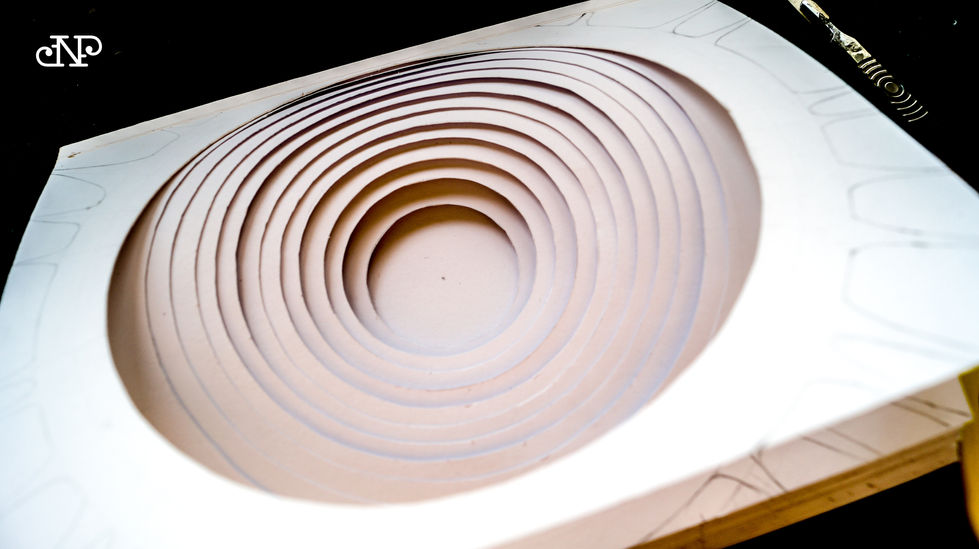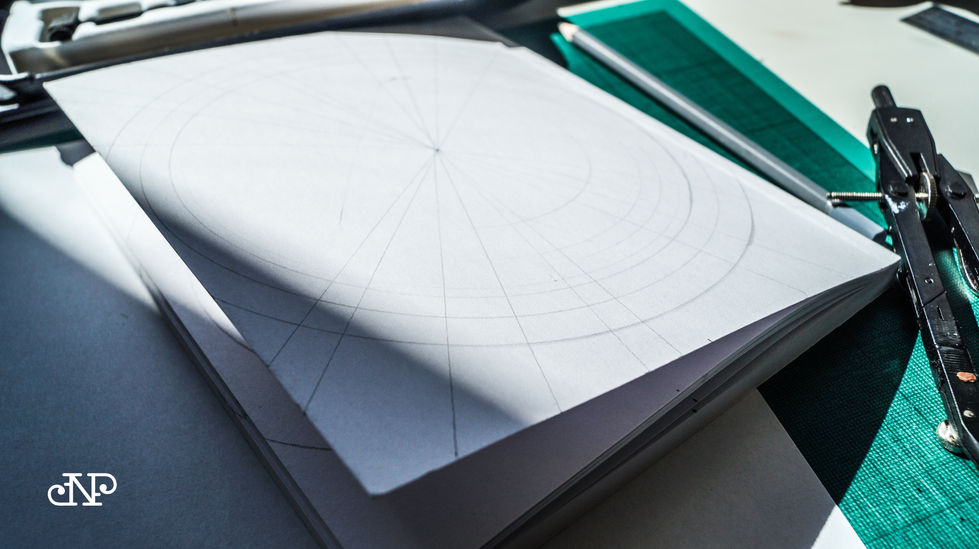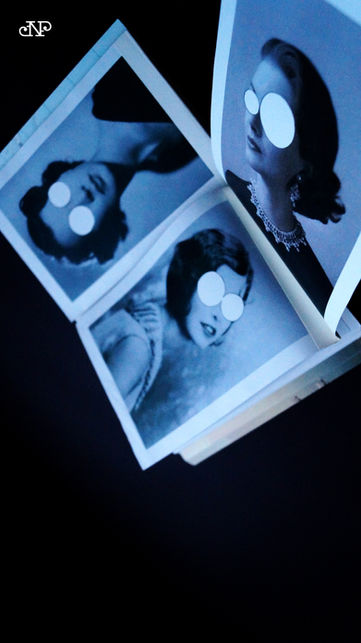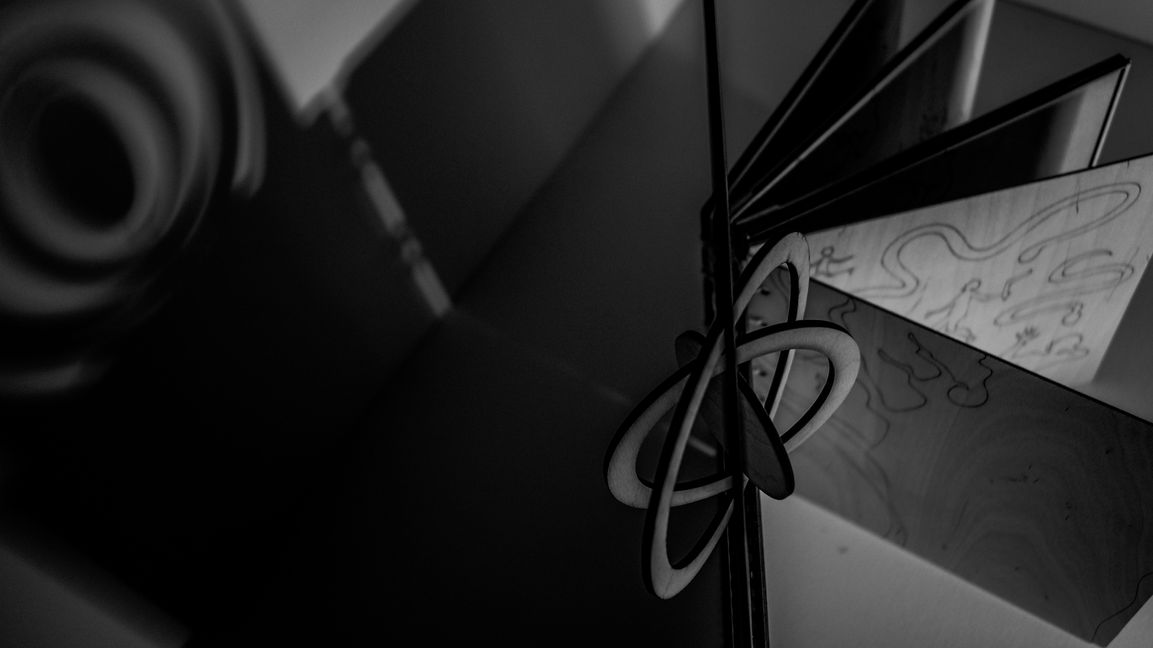
During the Erasmus student exchange program at Augsburg University of Applied Sciences in Germany I have worked on a project named “The Book as an Object” which was comprised of five various crafting methods of creating a book.
A blank white book that portrays a story. Cut-out and paper folding techniques were used.
Folklore Story: “ Raven and The Sun ”
Source: Legend courtesy of Starlore of Native America, assembled by Brad Snowder
Tribe: Tsimshian
Region: Northwest
The book is ruled by equilibrium.
Without opening it one may get a hint of what it is about or at least increase his curiosity.
The interesting factor about it is how one will perceive this story in a different way than it was originally told
= similarity to oral folklore/legend story telling.
FRONT : There are 12 (different intensity & concentration) suns = the number of months in one year.
BACK : There are 13 (stages of the) moons = the number of full moons in one year.

-
“ Once the sky had no day.
When the sky was clear there was some light from the stars but when it was cloudy it was very dark. Raven had put fish in the rivers and fruit trees in the land but he was saddened by the darkness. ” -
“ The Sun at that time was kept in a box by a chief in the sky. ”
-
“ The Raven came to a hole in the sky and went through. He came to a spring where the chief’s daughter would fetch water. He changed himself into a cedar seed and floated on the water. ”
-
“ When the girl drank from spring she swallowed the seed without noticing and ... ”
-
“ ... became pregnant. ”
-
“ A boy child was born which was really Raven.
As a toddler he begged to play with the yellow ball that grandfather kept in a box. He was allowed to play with the Sun and ... ” -
“ ... when the chief looked away he turned back into Raven and
flew back through the hole in the sky, bringing the Sun to our world. ”
A poster designed to transform into an invitation-book.
A 16 pieces cut out poster joined into a book that serves as invitation to the exhibition opening event for the Remix Book Design Project Presentation.
The elements within it are relevant to my personal work for this Project:
-
Text "Experiments" - Fraktur Font, used in the TEXT BOOK
-
Other text - Bauhaus Font ~ relevant to the location of the presentation of the book (Germany)
-
The joined colon (:) forms a visual separation between the different fonts and text through the red ribbon pulled through them.
-
The joined "oo" form the text "Book" form an interactive moon. Pulling up the tag that has written "Invitation" on it makes me moon pass through its phases.
-
The joined dot in the form of "o" and the "o" from the text "object" Form the Sun. The sun-rays are suggested by the yellow sewn thread that radiates from the centre of the "o".
-
"J" and "T" from the text "object" are pup-ups.
Altered text from a classic literature book.
Storm, Theodor: " Immensee "
(Novel, 70 Pages)
German Language, Fraktur Font
Parnass-Bucherei Nr.13
Alfred Scherz Verlag Bern
Printed in Switzerland
Found: “Contact” in Augsburg, Germany
Hand-knitted cover with the possibility to be removed, as the original aged cover has something interesting to offer as well.

Each page delivers one important action/fact/conversation from the story.
Each design of the page has a reason and a meaning.
To understand the idea behind each detail one must read the book.
A collection of original and altered images.
Before & After:
We have been given a set of images that we needed to alter and then create a book with the scanned modified images showing the ones that were used and the result.
Modified Images: 36
Pages in the Book: 64
Rhythm of the book:
★ ☼ ■ ❤ ■ ☼ ★ ❤ ■ ☼ ★ ☼ ■ ❤ ★ ☼ ■ ❤ ■ ☼ ★
★ - Foil Between Pages ( 2/3 original images; portrait )
☼- Opening (= 3 pages in dimension; 2 original images; nature, landscape )
■ - Simple (1 original image, smaller, down-right corner; nature)
❤ - Special Opening.
A book about me, divided in half.
Each image has a personal attachment to the period/ memory/ action from my life.
It is about the duality and the contrast in myself (~ the anima & animus).
The virtues became nouns, those that I attribute to myself.
The book can be viewed in different positions -> flexibility and interaction.
Each word has a visual representation and the opposite (as I see it) can be found on an opposite coloured background in the other book.
The WHITE BOOK inspired me to develop the initial idea and to create a collection of books that delivers a story, only by the use of symbols, without text.
SYMBOLS AS TRANSCENDENTAL FORMS OF UNIVERSAL KNOWLEDGE
Our world is built up on symbolism.
In my opinion the clues to understanding how the universe functions and what is our part in it are given to us through the elements of collective unconsciousness. The basis can be found in Sacred symbols widely used in different Belief Systems, Secret communication within societies such as Freemasonry, Illuminati and the messages encoded in ancient works of art.
Myths, Legends and Fairy Tales are important for suggesting the path that one must travel to achieve the harmony and union of life of the flesh with life of the spirit.
The symbols can play the role of subconscious triggers. A good example for this may be human impulses and intuition. Being aware of this gives the power of knowledge that can awake you from the norms of our society but also can represent a weapon of control over masses.
The dangers of modern society are ignorance and neglection of important factors that have the potential to manipulate our unconsciousness.
Advertisings, political companies and religious propaganda illustrates the usage of principles of crowd psychology in order to engage, control or influence the desires and direct the behaviour toward a specific action.
Psychoanalysis records a connection between a person‘s behaviour and his unconscious mind. This therapy proves that by making conscious what is hidden from our perception, mental-health disorders can be cured.
Acknowledging, accepting and joining the existence of the opposite qualities within our nature is vital. The essence of duality is the core of all spiritual teaching, psychological questioning and physical existence.
Throughout the history of human evolution traces of symbolism can be found.
Before the written word, early humans have used symbols as the first form of graphic communication. Paleoanthropologist, Genevieve von Petzinger (2015) concluded her research findings with a statement that there are similarities between the ancient markings in the caves from different parts of our universe.
The earliest written analysis of signs and their importance can be explored through the works of Greek philosophers Aristotle and Plato.
Semiotics, the study of symbolism, became a major approach to cultural studies in the late 1960s, when Roland Barthes’ (1957) collection of essays, entitled Mythologies, offered the explication of how the signs interfere with our lives and their constant usage within culture, mass media, advertising and entertainment to create “myths”.
Charles Sandres Peirce (Sebeok T.A., 1990) believed that the entire universe is perfused with signs, if not composed exclusively of signs. In 1998, he introduced a theory, stating that they consist of three inter-related parts: the sign, it’s object and interpretant. Umberto Eco (Michael C., 1999) suggested that every cultural phenomenon may be studied as communication, as a system of signs.
The discovery of dream symbolism was realised by Karl Albert Scherner in 1861.
Sigmund Freud, the founder of psychoanalysis, affirmed Scherner’s discovery and modified it considerably. He described the features of the mind’s structure and function by dividing them in 3 parts (1962): the conscious, the preconscious and the unconscious and 3 entities of our Psyche (1949): instinctual id, ego and superego. According to Freudian theory – the unconscious mind governs behaviour to a greater degree than people suspect. Freud (1875) considered dreams to be the “royal road to the unconscious” In his view, symbols, that at first sight seem to be very different, have a unique signification: they point to the human sexual life, more precisely to sexual organs. However, Freud was cautious about symbols and stated that general symbols are more personal than universal.
Further research on the origin of the signs were leaded by Carl Jung. In 1936, he re-imagined Freud’s concept of the Psyche by dividing it in another 3 different parts: conscious, personal unconscious and collective unconscious. In support to his theory, Carl Jung states an existence of identical psychic structure that is common to all human beings. The elements within our collective unconscious are pre-personal or transpersonal and are named “archetypes” by Carl Jung. They are the ancient, unconscious source of much that we think, do, and say as human beings. We inherit the same structure, the same symbolic image, but each of us fills them in with the specific form and content. The details of our personal experience attach meaning to them and project them into the outer world. Carl Jung provides some of the most important archetypes: The Persona, The Shadow, The Anima and Animus and the Wholeness. The principle of duality is stated by Jung (1993) to be at the base of Archetypal structures and within the human nature: “Every good quality has its bad side, and nothing that is good can come into the world without directly producing a corresponding evil.” He exemplifies this theory by bringing up the most recognisable archetypes from our everyday lives: Male and Female, The God and The Devil and Goddess and Witch.
Joseph Campbell (1949) in his writing entitled Hero with a thousand faces, evokes the power of myths, using the archetypal story of the adventurous hero’s journey as a base for exploring the essential human truths. As part of this exploration, the author develops themes relating to the nature of duality and harmony and the function of symbolism in both story and life. He guides his reader through every step of his deductive process and solidifies his statements by cross referencing various cultures with specific myths and their manifestation in the physical world. Joseph Campbell, suggests that the healing, transformative, illuminative powers of the myths and stories of the past have generally been lost, but that an understanding of them can ultimately provide significant clues into an understanding of the human psycho-spiritual condition, unchanged by time, place and culture. He also stresses out the dangers of myths interpretation solely as manifestations of historical events, circumstances or science as this leads to transforming the living images into remote facts; this is when “temples become museums”.
The mythologist comments frequently that all existence operates on a level of duality – two aspects functioning at the same time, one giving depth and reason to the other. One of the most important archetypes he analyses through his work is the female and male principle – both the Creators, corresponding to Eros and Libido described in Jungian psychoanalysis and both the Destructors, corresponding to what Freud described as the Ego. Campbell states that the nature of duality is the union of the opposites and exemplifies it with androgynous figures – Adam and Eve, Hermaphrodite and Eros, Shiva and Shakti. He affirms that the myths’ ultimate purpose is to provide signposts for the Hero’s journey and all life, whose goal is the Union, the integration of the apparently contradictory sides of Self. In his work, Joseph Campbell encourages Freud’s point of view but true transcendency can only be comprehended through consideration of broader and deeper perspectives as described in Jungian psychoanalysis.
In the Uses of Enchantment written by Bruno Bettelheim (2011) the duality of signs found in fairy tales is compared to the structure of modern children’s’ stories. He identifies a problem within our contemporary culture that came with the neglection and mutilation of the important parts of folklore stories. In his writing, Bruno Bettelheim suggests that by presenting the polarities of character, it permits the child to comprehend easily the difference between opposites. As a result, youngster’s choices are based not so much on wrong versus right as on who arouses sympathy and who antipathy. Jack Zipes (2012) in The Irresistible Fairy Tale: The cultural and Social History of a Genre states that even though we do not possess printed records of how people told stories thousands of years ago, we do have enough archaeological evidence through cave paintings, vases, tombs, carvings, codices, and other artefacts to enable us to grasp what kind of stories were told in ancient pagan cultures.
The trip to Australia taken during the Spring Holiday 2018 inspired me to research Aboriginal Dreamtime Stories that I could portray through symbolism. The land and the nature were enchanting. The dot-style painting, the rich culture and the symbols found in the Aboriginal folklore enriched my view on the look of the future collection of story books.
After elaborate analysis of Aboriginal Dreamtime Stories’ structure, I have decided to focus on three of them, each touching on different celestial body motifs: moon, starts and sun.
_ THE TEXT _
Bahloo the Moon and the Daens - K. Langloh Parker
Keywords: One moon, 3 Snakes (death adder, black snake, tiger snake), 12 Aborigine, One Creek, Plank, Stone, Death.
Bahloo the moon looked down at the earth one night, when his light was shining quite brightly, to see if anyone was moving. When the earth people were all asleep was the time he chose for playing with his three dogs. He called them dogs, but the earth people called them snakes, the death adder, the black snake, and the tiger snake. As he looked down on to the earth, with his three dogs beside him, Bahloo saw about a dozen daens, or black fellows, crossing a creek. He called to them saying, "Stop, I want you to carry my dogs across that creek." But the black fellows, though they liked Bahloo well, did not like his dogs, for sometimes when he had brought these dogs to play on the earth, they had bitten not only the earth dogs but their masters; and the poison left by the bites had killed those bitten. So, the black fellows said, "No, Bahloo, we are too frightened; your dogs might bite us. They are not like our dogs, whose bite would not kill us."
Bahloo said, "If you do what I ask you, when you die you shall come to life again, not die and stay always where you are put when you are dead. See this piece of bark. I throw it into the water." And he threw a piece of bark into the creek. "See it comes to the top again and floats. That is what would happen to you if you would do what I ask you: first under when you die, then up again at once. If you will not take my dogs over, you foolish daens, you will die like this," and he threw a stone into the creek, which sank to the bottom. "You will be like that stone, never rise again, Wombah daens!"
But the black fellows said, "We cannot do it, Bahloo. We are too frightened of your dogs."
"I will come down and carry them over myself to show you that they are quite safe and harmless." And down he came, the black snake coiled round one arm, the tiger snake round the other, and the death adder on his shoulder, coiled towards his neck. He carried them over. When he had crossed the creek he picked up a big stone, and he threw it into the water, saying, "Now, you cowardly daens, you would not do what I, Bahloo, asked you to do, and so forever you have lost the chance of rising again after you die. You will just stay where you are put, like that stone does under the water, and grow, as it does, to be part of the earth. If you had done what I asked you, you could have died as often as I die, and have come to life as often as I come to life. But now you will only be black fellows while you live, and bones when you are dead."
Bahloo looked so cross, and the three snakes hissed so fiercely, that the black fellows were very glad to see them disappear from their sight behind the trees. The black fellows had always been frightened of Bahloo's dogs, and now they hated them, and they said, "If we could get them away from Bahloo we would kill them." And thenceforth, whenever they saw a snake alone they killed it. But Bahloo only sent more, for he said, "As long as there are black fellows there shall be snakes to remind them that they would not do what I asked them."
Where the Frost Comes From - K. Langloh Parker.
Keywords: 7 Meamei Sisters; Icicles; The Berai-Berai boys; Bees; Wurrunnah; Pleiades; Orion's Sword and Belt; Venus; Corroborees Dance; Septum; Ice; Rain.
The Meamei, or Pleiades, once lived on this earth. They were seven sisters remarkable for their beauty. They had long hair to their waists, and their bodies sparkled with icicles. Their father and mother lived among the rocks away on some distant mountain, staying there always, never wandering about as their daughters did. When the sisters used to go hunting, they never joined any other tribes, though many tried from time to time to make friends with them. One large family of boys in particular thought them so beautiful that they wished them to stay with them and be their wives. These boys, the Berai-Berai, used to follow the Meamei about, and watching where they camped, used to leave there offerings for them.
The Berai-Berai had great skill in finding the nests of bees. First, they would catch a bee, and stick some white down or a white feather with some gum on its back between its hind legs. Then they would let it go and follow it to its nest. The honey they found they would put in wirrees and leave at the camps of the Meamei, who ate the honey, but listened not to the wooing.
But one day old Wurrunnah stole two of the girls, capturing them by stratagem. He tried to warm the icicles off them, but only succeeded in putting out his fire.
After a term of forced captivity, the two stolen girls were translated to the sky. There they found their five sisters stationed. With them they have since remained; not shining quite so brightly as the other five, having been dulled by the warmth of Wurrunnah's fires.
When the Berai-Berai found that the Meamei had left this earth for ever, they were inconsolable. Maidens of their own tribe were offered to them, but as they could not have the Meamei they would have none. Refusing to be comforted they would not eat, and so pined away and died. The spirits were sorry for them, and pleased with their constancy, so they gave them too a place in the sky, and there they are still. Orion's Sword and Belt, we call them, but to the Daens they are still known as Berai-Berai, the boys.
The Daens say the Berai-Berai still hunt the bees by day, and at night dance corroborees which the Meamei sing for them. For though the Meamei stay in their own camp at some distance from the Berai-Berai, they are not too far away for their songs to be heard. The Daens say, too, that the Meamei will shine ever as an example to all women on earth.
At one time of the year, in remembrance that they once lived on earth, the Meamei break off some ice from themselves and throw it down. When, on waking in the morning, the Daens see ice everywhere they say: "The Meamei have not forgotten us. They have thrown some of their ice down. We will show we remember them too."
Then they take a piece of ice and hold it to the septum of the noses of such children who have not already had theirs pierced. When the septums are numb with the cold they are pierced, and a straw or bone placed through them. "Now," say the Daens, "these children will be able to sing as the Meamei sing."
A relation of the Meamei was looking down at the earth when the two sisters were being translated to the sky. When he saw how the old man from whom they had escaped ran about blustering and ordering them down again, he was so amused at Wurrunnah's discomfiture, and glad at their escape, that he burst out laughing, and has been laughing ever since, being still known as Daendee Ghindamaylännah, the laughing star, to the Daens, to us as Venus.
When thunder is heard in the winter time the Daens say: "There are the Meamei bathing again. That is the noise they make as they jump, doubled up, into the water, when playing Bubahlarmay, for whoever makes the loudest flop wins the game, which is a favourite one with the earth people too." When the noise of the Bubahlarmay of the Meamei is heard the Daens say too, "Soon rain will fall, the Meamei will splash the water down. It will reach us in three days."
How the Sun was Made - K. Langloh Parker.
Keywords: Emu; Brolga; Egg (Yolk); Heap of Firewood; Spirits; Morning Star; Laughing Jackass; Sun.
For a long time, there was no sun, only a moon and stars. That was before there were men on the earth, only birds and beasts, all of which were many sizes larger than they are now.
One day, Dinewan, the emu, and Brälgah, the native companion, were on a large plain near the Murrumbidgee. There they were quarrelling and fighting. Brälgah, in her rage, rushed to the nest of Dinewan, seized from it one of the huge eggs in it, which she threw with all her force up to the sky. There it broke on a heap of firewood, which burst into a flame as the yellow yolk spilt all over it, which flame lit up the world below, to the astonishment of everything on it. They had only been used to the semi-darkness and were dazzled by such brightness.
A good spirit who lived in the sky saw how bright and beautiful the earth looked when lit up by this blaze. He thought it would be a good thing to make a fire every day, which from that time he has done. All night he and his attendant spirits collect wood and heap it up. When the heap is nearly big enough they send out the morning star to warn those on earth that the fire will soon be lit.
They, however, found this warning was not enough, for those who slept saw it not. Then they thought they must have some noise made at dawn of day to herald the coming of the sun and waken the sleepers. But they could not decide upon to whom should be given this office for a long time.
At last one evening they heard the laughter of Gougourgahgah, the laughing jackass, ringing through the air. "That is the noise we want," they said. Then they told Gougourgahgah that as the morning star faded and the day dawned he was every morning to laugh his loudest, that his laughter might awaken all sleepers before sunrise. If he would not agree to do this then no more would they light the sun-fire, but let the earth be ever in twilight again.
But Gougourgahgah saved the light for the world and agreed to laugh his loudest at every dawn of day, which he has done ever since, making the air ring with his loud cackling "gou-gour-gah-gah, gou-gour-gah-gah, gou-gour-gah-gah."
When the spirits first light the fire, it does not throw out much heat. But in the middle of the day when the whole heap of firewood is in a blaze, the heat is fierce. After that it begins to die gradually away until only the red coals are left at sunset, and they quickly die out, except a few the spirits cover up with clouds, and save to light the heap of wood they get ready for the next day.
Children are not allowed to imitate the laughter of Gougourgahgah, lest he should hear them and cease his morning cry. If children do laugh as he does, an extra tooth grows above their eye-tooth, so that they carry a mark of their mockery in punishment for it, for well do the good spirits know that if ever a time comes wherein the Gougourgahgahs cease laughing to herald the sun, then the time will have come when no more Daens are seen in the land, and darkness will reign once more.
200x200mm , Wood Planks
#1 : Interactive Pieces + Slide up Front Cover.
Front - Moon / Back - Plane
#2 : Interactive Light + Fold-out Pages.
Front - Pleiades / Back - Orion's Belt and Sword
#3 : Interactive Sound.
Front - Plane / Back – Sun

Interactive Moving Parts :
-
moon and its three halos (each with a snake) rotating and sliding up from the cover frame
-
the plank "floating" in the creek
The moon sliding up represents the start of the tale. Thus, the story continues while the moon is always above and present.

Interactive Lights :
-
1 (Front Cover) - Pleiades (Reverse Proximity Sensor*)
-
2 (Panel's Back) - Fire and 2 captive Meamei Sisters (Reverse Proximity Sensor - fade flickering lights)
-
3 (Panel's Back) - Pleiades (Reverse Proximity Sensor - twinkle flickering lights)
-
4 (Panel's Back) - Orion's Sword and Belt (Reverse Proximity Sensor - heartbeat flickering lights)
-
7 (Back Cover) - Orion's Sword and Belt (Reverse Proximity Sensor)
Fold-Up Panels :
-
5 (Panel's Front) - Corroborees & Pleaides' Snow
-
6 (Panel's Front) - Snow & Pleiades' Rain
* Reverse Proximity Sensor - Default: LEDs ON / Motion, Proximity, Light: LEDs OFF

Interactive Sound :
Back Cover - Laughing Jackass (Light Sensor in the bird's eye - triggers the sound when the page is viewed)

Coming Soon...
Coming Soon...
Coming Soon...
Coming Soon...
Coming Soon...
Coming Soon...
Future of this project:
Explore folklore stories by integrating into the suburban life of my home country - Moldova.






































